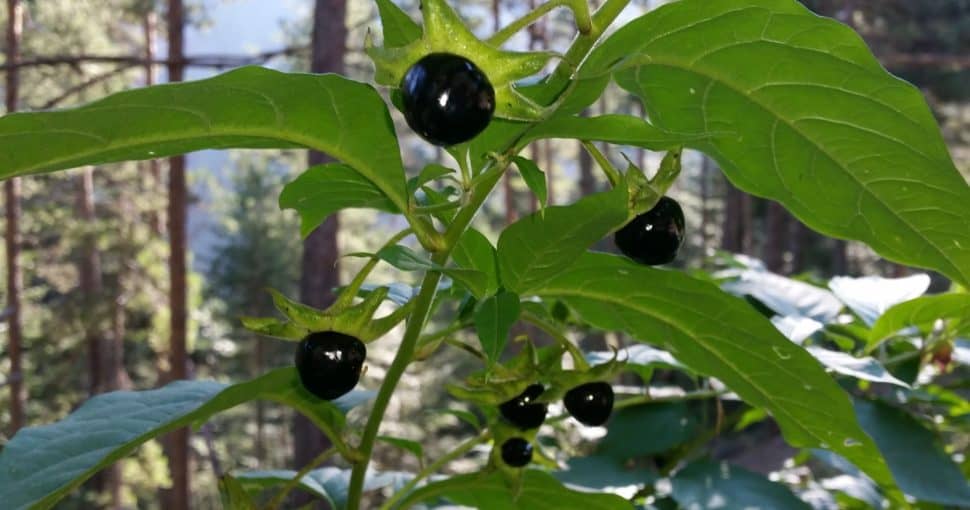There are a few types of dangerous plants in Massachusetts. Some individuals, especially youngsters and animals, may be drawn to them because of their appealing appearance. As a result, while out for a stroll or a bike ride, it’s critical to pay attention to your surroundings. In rare circumstances, there might be severe repercussions to touching some plants. It’s also important to be aware of the dangers of eating hazardous plants, which can kill you if consumed in large quantities.
Contents
- 1. Giant Hogweed (Heracleum Mantegazzianum)
- 2. Autumn Crocus (Colchicum Autumnale)
- 3. Azaleas (Rhododendron)
- 4. Baneberry (Actaea Rubra)
- 5. Belladonna/Deadly Nightshade (Atropa Belladonna)
- 6. Elephant’s Ear (Alocasia Calidora)
- 7. Caper Spurge (Euphorbia Lathyris)
- 8. Castor Bean (Ricinus Communis)
- 9. Daffodil (Narcissus)
- 10. Corn Lily (Veratrum Californicum)
- 11. Foxgloves (Digitalis)
- 12. Hortensia (Hydrangea)
- 13. Lily of the Valley (Convallaria Majalis)
- 14. Oleander (Nerium Oleander)
- 15. Philodendron (Philodendron)
- 16. Poinsettia (Euphorbia Pulcherrima)
- 17. Rhubarb (Rheum Rhabarbarum)
- 18. Atamasco Lily (Zephyranthes Atamasca)
- 19. Autumn Sneezeweed (Helenium Autumnale)
- 20. Yarrow (Achillea Millefolium)
- 21. Eastern Baccharis (Baccharis Halimifolia)
- 22. White Snakeroot (Ageratina Altissima)
- 23. Yellow Jessamine (Gelsemium Sempervirens)
- 24. Scotch Broom (Cytisus Scoparius)
- 25. Showy Crotalaria (Crotalaria Spectabilis)
Poisonous plants cause injury to tens of thousands of people each year. Inability to detect certain plants causes severe skin rashes and allergic responses in individuals. Wild plants are known to spring out in unexpected locations during the summer months. It’s not always easy to tell one plant from another, and some might cause substantial pain.
If you’re gardening, camping, or hunting in the woods or fields, you need to know which plants are the most hazardous, noting that some poisonous plants may be harmful to both people and animals. As a result, you should be cautious when taking your pet for a stroll in the neighboring forest. This article aims to educate you about the most toxic plants in Massachusetts so that you can avoid them at all costs.
1. Giant Hogweed (Heracleum Mantegazzianum)
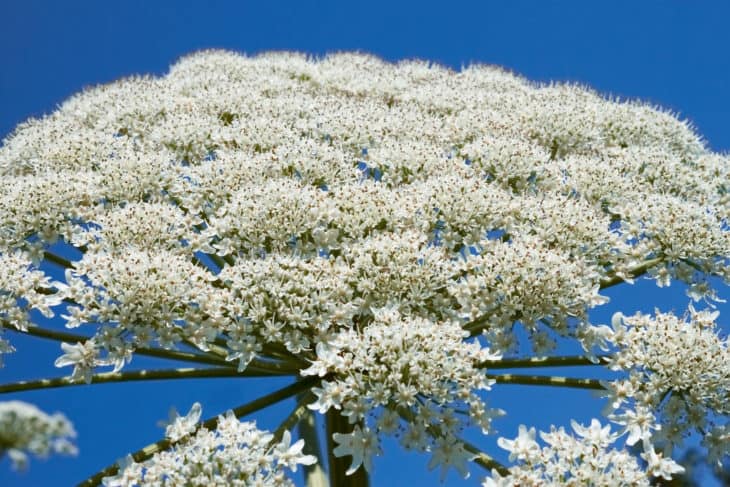
Giant Hogweed is a Georgian and Southern Russian native introduced to the US in the last century. This plant thrives in areas with moist, well-drained soils and abundant sunlight. It grows along rivers, yards, streams, and roadsides. Giant Hogweed is an invasive species that grows ridged, hollow stems and white blossoms that develop in large, compound umbels. It also has compound, massive, incised leaves. Skin contact with Giant Hogweed parts or sap during the day can cause swelling, blistering, and itchiness that will last for months and make your skin UV-sensitive.
2. Autumn Crocus (Colchicum Autumnale)
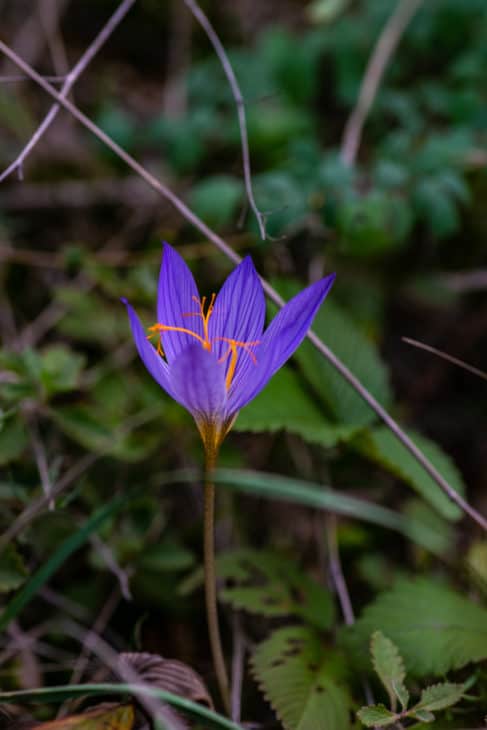
Autumn Crocus is a southern European native plant. This highly toxic perennial and herbaceous plant grows in meadows and damps woodland clearings in rich soils. It features slender, basal leaves and bears white or purple-pink, tubular autumn blooms that attract bees and butterflies. All parts of an autumn Crocus are toxic as they contain colchicine. Accidental ingestion can cause diarrhea, cramping, multi-organ damage, respiratory failure, bloody vomiting, and more.
3. Azaleas (Rhododendron)
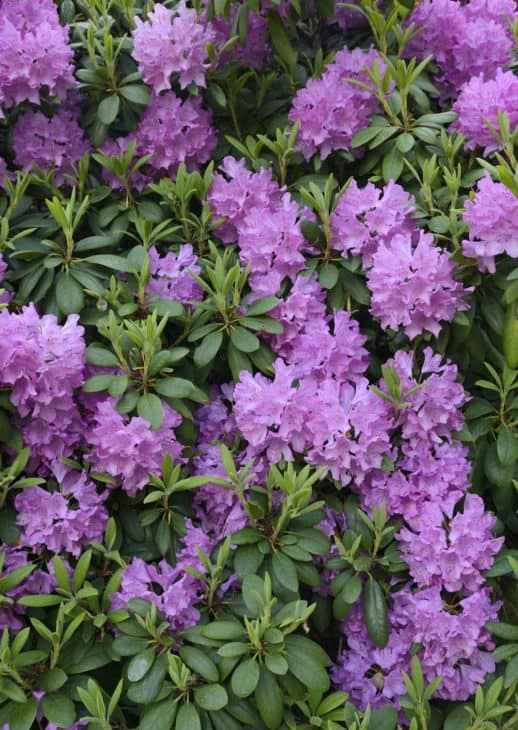
Azaleas are deciduous plants grown as ornamentals worldwide due to their attractive flowers. Native to Europe, North America, and Asia, Azalea bushes contain toxins called grayanotoxins, which make them poisonous. Consuming this plant will result in excessive salivation and a burning sensation in the mouth. Azalea bushes bear funnel-shaped, scented blooms with five projecting stamens and two distinct lips.
4. Baneberry (Actaea Rubra)
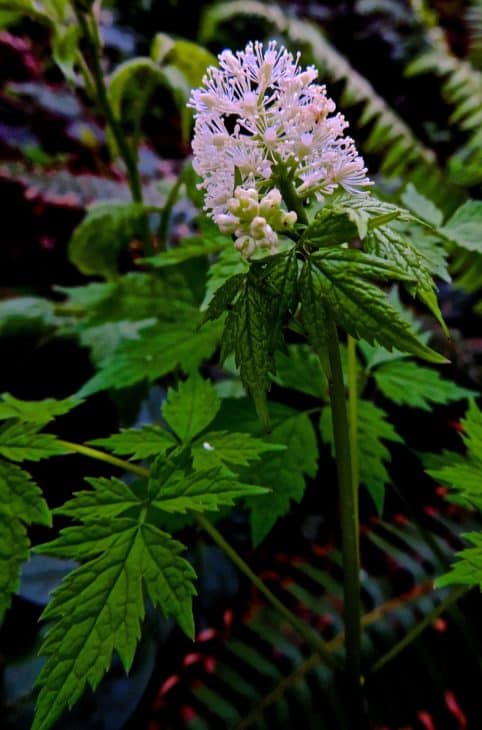
If the fruits of Red and White Baneberry (Actaea Rubra) are consumed by a human, they are extremely poisonous and can have a negative impact on the neurological system. Baneberries have been linked to the deaths of children in Europe, but they have not been linked to the deaths of humans or cattle in the United States, according to reports.
5. Belladonna/Deadly Nightshade (Atropa Belladonna)
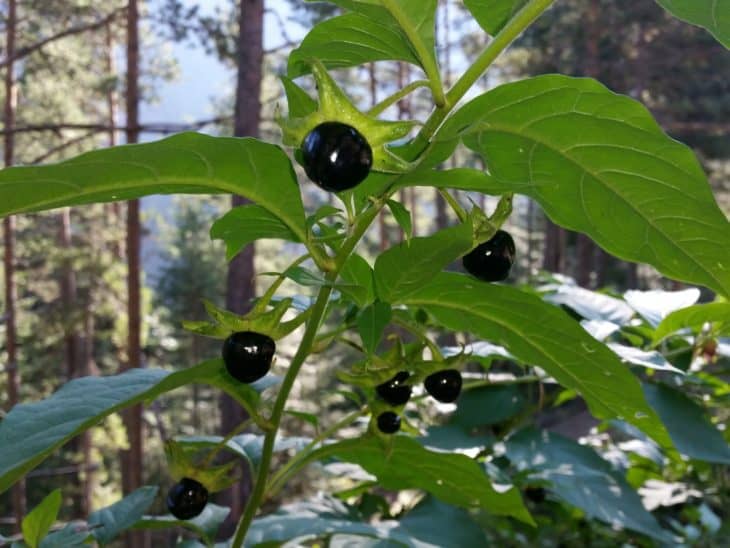
The belladonna plant (or deadly nightshade) has bright red and oblong fruits that look like berries. It also sports yellow and purple flowers. In addition to that, you may be able to tell that you’re near a belladonna plant because of its distinctive foul smell. This plant typically grows in shady areas or woodlands. Elevated pulses and paralysis are common when pets eat the plant.
6. Elephant’s Ear (Alocasia Calidora)
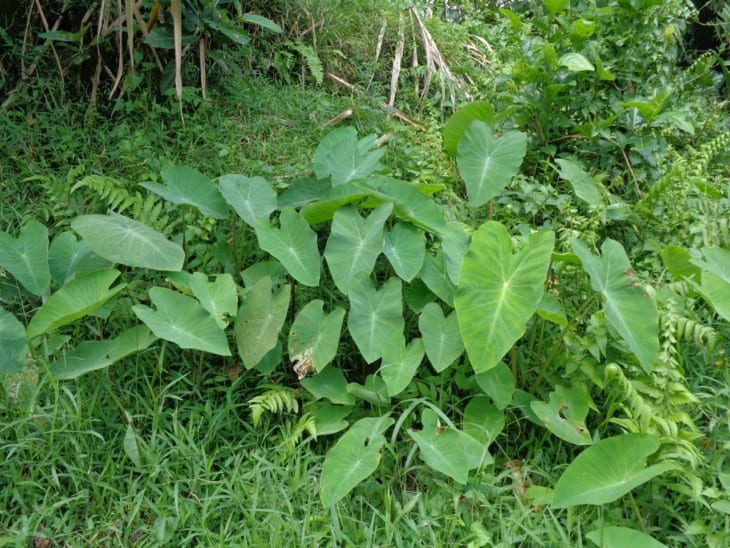
Elephant Ear is an upright, broadleaf, evergreen cultivar with large, striking, tropical-type, arrow-shaped, ribbed foliage. This plant grows in a vase shape and has spadix blooms. It is resistant to heat and humidity. Elephant’s Ear has poisonous leaves that contain insoluble calcium oxalates. Ingesting this plant can result in excessive drooling, pain, swelling of the lips, mouth, and tongue, vomiting, and difficulty swelling.
7. Caper Spurge (Euphorbia Lathyris)
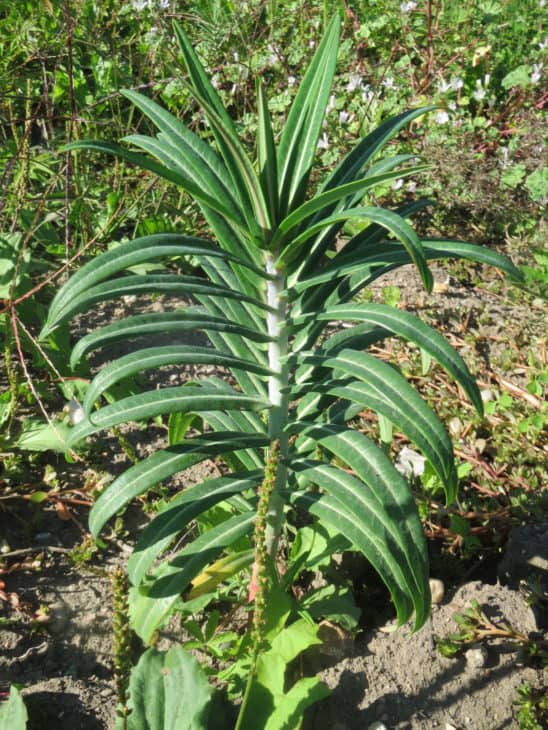
Caper Spurge is an annual or biennial herb that grows around buildings and in waste regions. This self-seeding plant grows green or gold-yellow, spring, cup-shaped blooms that give way to the green, silver, or brown capsules. It also features waxy, alternate, lanceolate, blue-green leaves that grow on straight, fleshy, blue-green stems. All parts of this plant are highly poisonous, and ingesting them can cause diarrhea, vomiting, nausea, and death. Skin contact can result in swelling, blisters, and redness.
8. Castor Bean (Ricinus Communis)
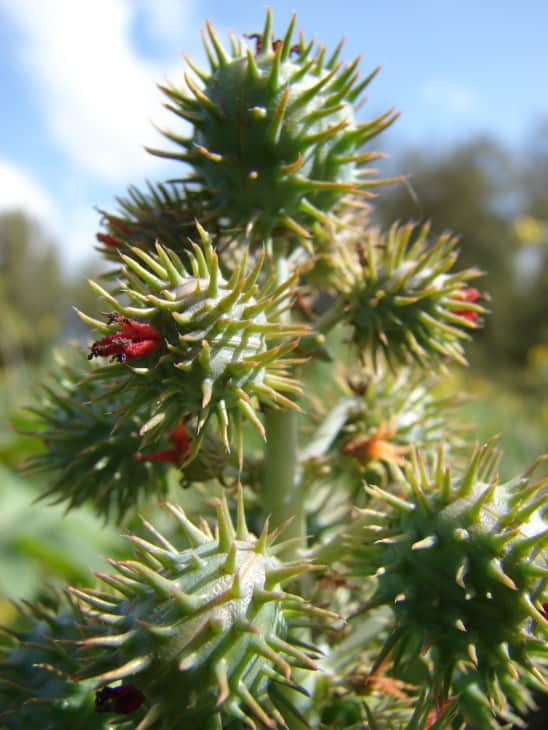
Also known as the African Wonder Tree, Castor Bean is an annual herbaceous, cultivated, ornamental tree native to Africa. It contains highly poisonous leaves and seeds that cause immediate nausea, abdominal pain, bloody diarrhea, vomiting, depression, colic, sweating, difficulty breathing, fever, convulsions, coma, and fatality. Skin contact can cause a severe allergic reaction in certain people. This plant has red-purplish stems, green, alternate, simple, large, compound leaves, and small, white, gold, or red/burgundy blossoms.
9. Daffodil (Narcissus)
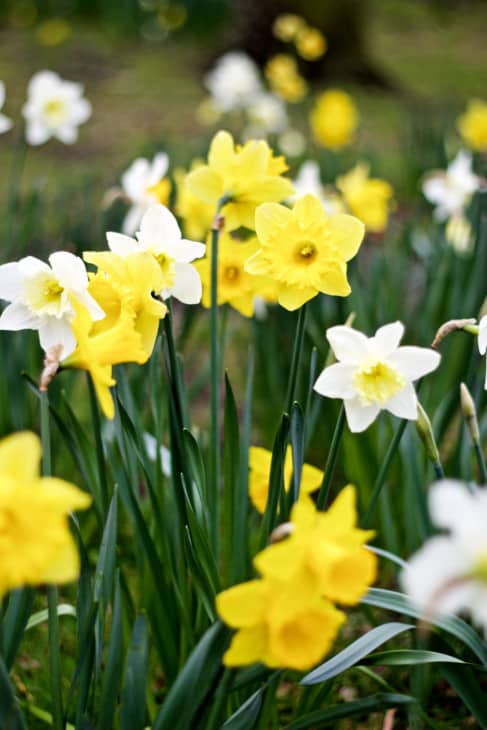
Daffodils are toxic perennial herbaceous plants native to Northern Europe. When consumed in large quantities, they can cause salivation, vomiting, diarrhea, nausea, convulsions, and trembling. Skin contact can result in dermatitis. Consuming the bulbs can result in low BP and cardiac arrhythmias. Daffodils or Tazettas bear showy, pink, white, orange, gold, or variegated scented blooms that are star-like or trumpet-shaped. They also have simple, deciduous, green, strap-shaped, waxy foliage.
10. Corn Lily (Veratrum Californicum)
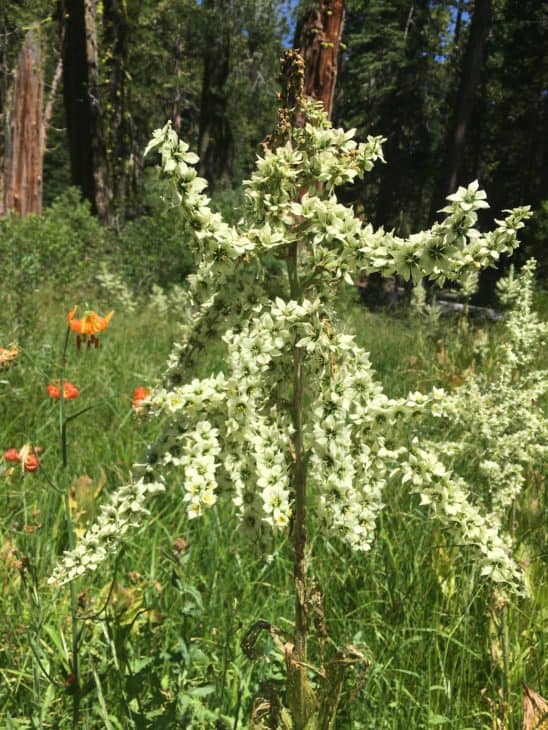
The corn lily plant is extremely poisonous. It has a heavy and leafy stem, and the entire plant is about 4 to 7 feet in height. The small flowers of this plant cluster at the top of the stem. This plant can even be fatal to humans, especially the roots. All parts of the plant are toxic to humans and animals alike. However, the roots are the most toxic part of the plant.
11. Foxgloves (Digitalis)
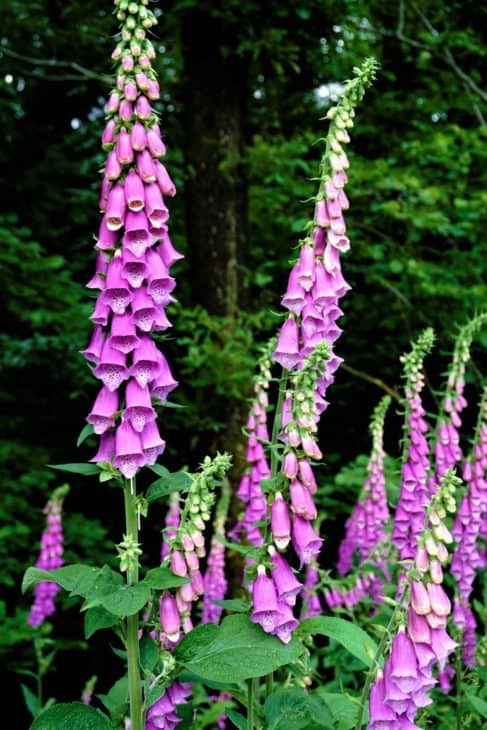
Foxglove is a genus of around 20 species of herbaceous shrub, perennial plants, and biennials. They are native to the Mediterranean, Europe, and the Canary Islands. These plants feature ovate, alternating leaves that grow on their lower stems. The stems are capped by tall, one-sided clusters of bell-shaped, pendulous blooms in purple, white, or yellow hues. All parts of Foxglove contain poisonous cardiac glycosides, and ingesting them can result in severe poisoning, causing headache, nausea, diarrhea, and skin irritation.
12. Hortensia (Hydrangea)
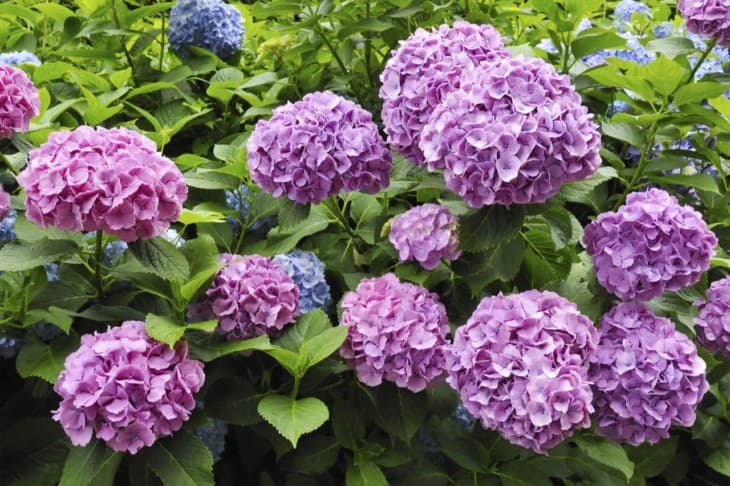
Hortensia, also known as Hydrangea, is a popularly grown, rapidly-growing shrub that is poisonous to livestock and humans. It bears striking clusters of brightly-colored blooms that grow in clear blue, frosty white, red, lavender, and vibrant pink colors. All parts of this plant are poisonous as they contain cyanogenic glycoside. Ingesting it will result in nausea, diarrhea, and vomiting. Skin contact will cause dermatitis.
13. Lily of the Valley (Convallaria Majalis)
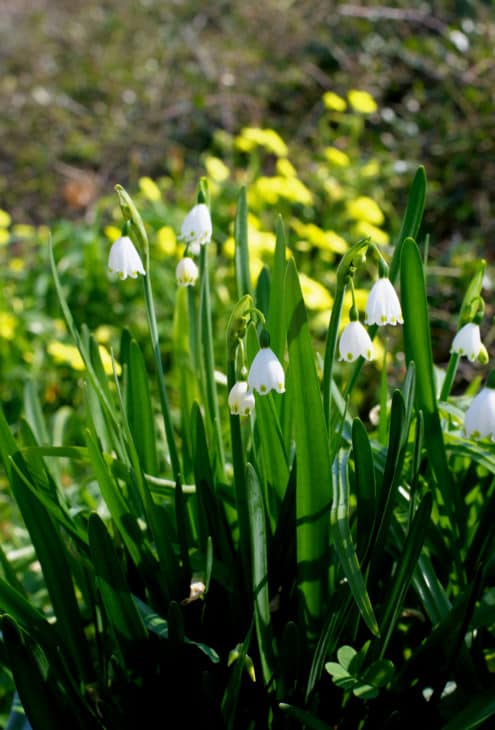
Lilly of the Valle is a scented perennial herb native to eastern North America and Eurasia. It’s also cultivated in shaded gardens in temperate regions across the world. It forms a dense mat that can be used as ground cover. This plant features one-sided clusters of nodding, bell-shaped, white blossoms, red berry-like fruits, and glossy leaves. Lily of the Valley has cardiac glycosides, and ingesting any part of this plan can cause a variety of cardiac arrhythmias, such as rapid, thread pulse, bradycardia, and more. Accidental poisoning can also be fatal.
14. Oleander (Nerium Oleander)
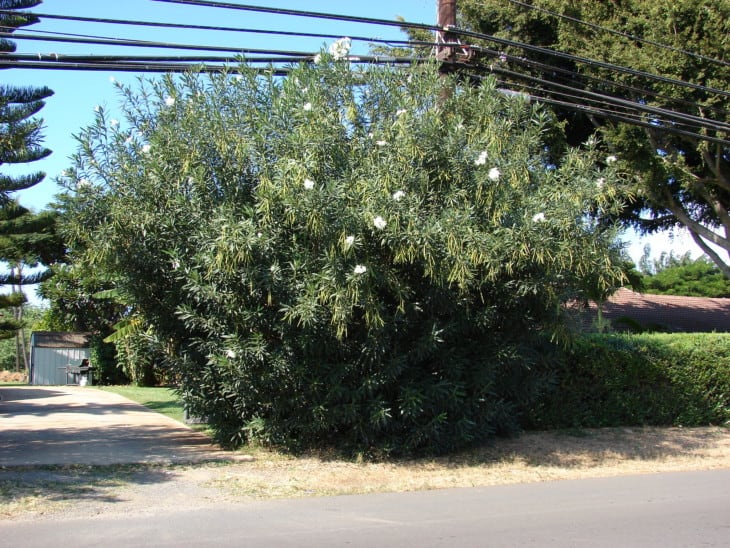
Oleander produces a toxic milky sap that contains cardiac glycosides. Accidental consumption of this evergreen plant can result in death as this toxin will slow down your heart rate. Oleander is an ornamental, blooming shrub native to the Mediterranean. This plant has thick, lance-like leaves that make up a shrub-like crown. Oleander produces masses of white, rose, and yellow-hued blooms. Coming into contact with its sap can result in skin irritation. Even eating a single leaf of this highly toxic plant can result in death.
15. Philodendron (Philodendron)
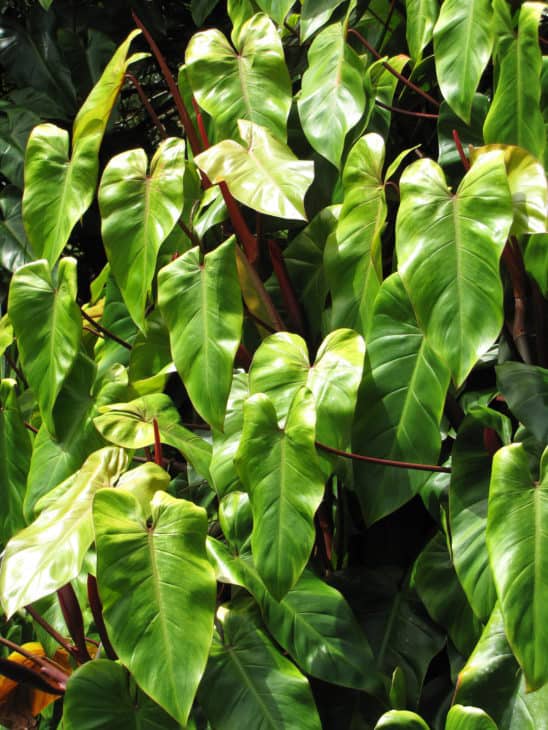
Philodendrons are a genus of 450 species of stout-stemmed, trailing herbs native to tropical America. Many of these plants start as vines and then turn into epiphytes. Their leaves are borne on long petioles and appear before the blooms that are unisex, reddish, white, and yellow-hued. They give way to red-orange fruits. Philodendrons are poisonous plants, and ingesting them can cause swelling and burning of the tongue, lips, and throat, diarrhea, and vomiting.
16. Poinsettia (Euphorbia Pulcherrima)
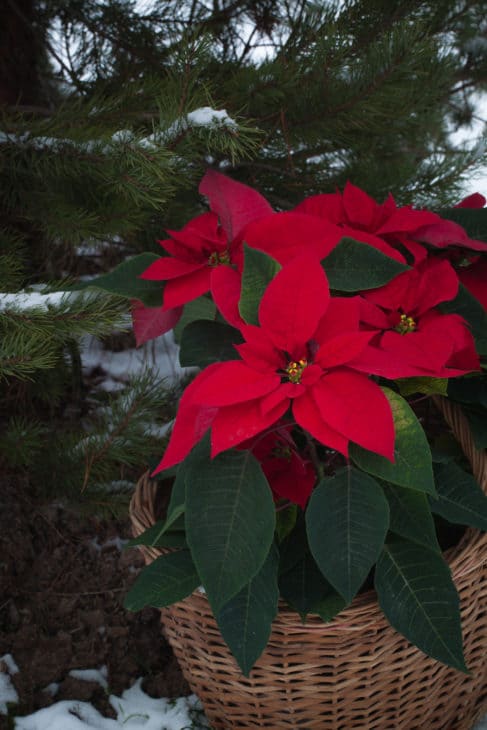
The poinsettia plant is used in floral displays for Christmas as it contains both green and red foliage. The plant has a reputation for being highly toxic, but that may not be the case. In many cases, physical contact or consuming it may not have any negative effects. That said, you should not risk it, as symptoms including diarrhea, vomiting, and nausea may occur.
17. Rhubarb (Rheum Rhabarbarum)
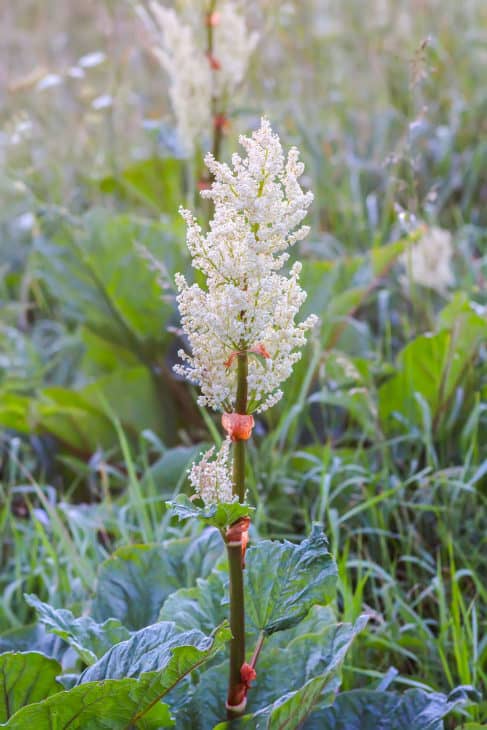
There are several regions of the world where rhubarb grows, such as the mountains and temperate regions of Northeast Asia. The stalks are tall and fibrous, ranging in color from dark red to light green. Vomiting and diarrhea are the most common rhubarb poisoning symptoms, and they go away quickly. Difficulty swallowing, sore throat, vomiting, nausea, diarrhea, and stomach pain are among the more serious causes.
18. Atamasco Lily (Zephyranthes Atamasca)
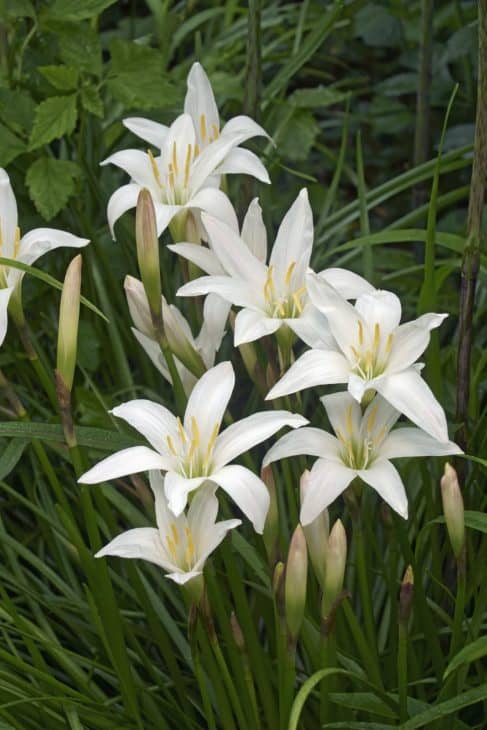
These plants are grown in damp to wet organic soil in full sun to light shade. Individuals often add leaf mold to the soil periodically. It can withstand seasonal flooding and thrives in full sun for at least two hours a day. Alkaloid lycorine and other poisonous components in the bulbs and other parts of Zephyranthes and Habranthus species can cause convulsions and occasionally death in humans and other animals.
19. Autumn Sneezeweed (Helenium Autumnale)
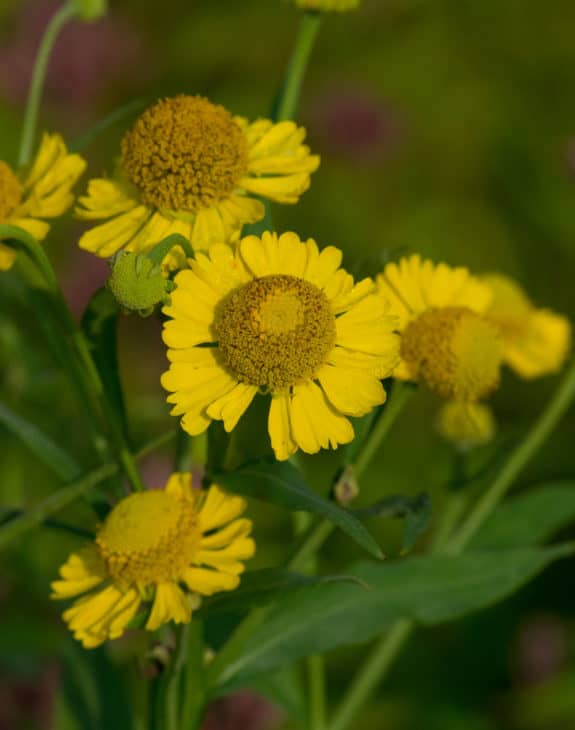
In the sunflower family, Helenium Autumnale belongs to the North American species. Large-flowered sneezeweed and common sneezeweed are both popular names for this plant. The leaves, flowers, and seeds of common sneezeweed can be lethal to humans if consumed in sufficient numbers, causing stomach and intestinal discomfort. Livestock can be poisoned by the toxins found in sneezeweed, mainly sheep and cattle.
20. Yarrow (Achillea Millefolium)
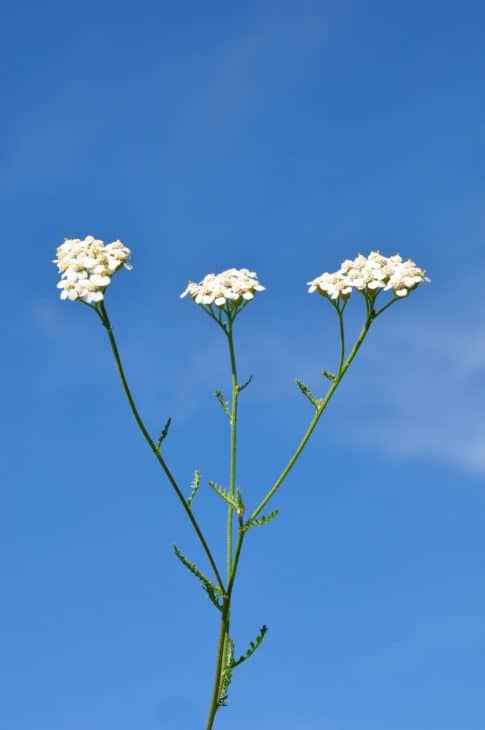
This is a very commonly found plant worldwide and has many medicinal uses, especially for eczema and certain skin conditions. It contains a chemical called thujone which is unsafe if used incorrectly. When used in controlled amounts, the yarrow can safely be consumed in correct doses for up to a year. Although poisonous, it is impossible to have more than one bite even by animals due to its extremely bitter taste.
21. Eastern Baccharis (Baccharis Halimifolia)
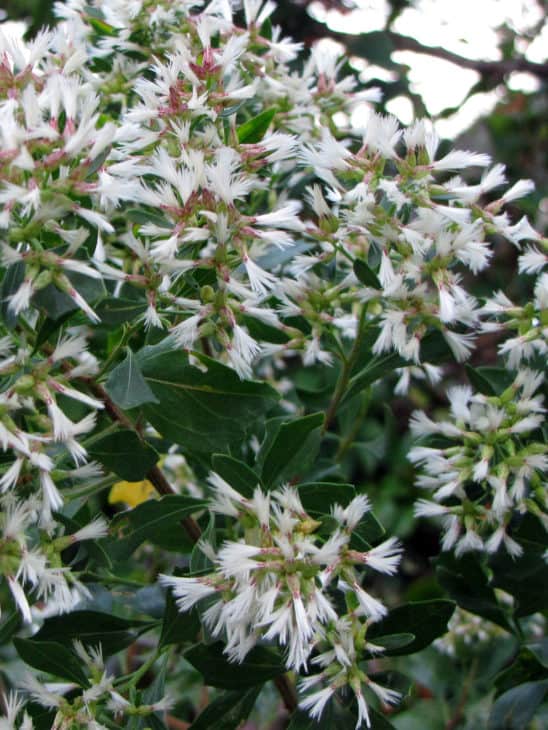
Baccharis Halimifolia is a shrub in the daisy family native to North America, Nova Scotia, eastern and southern United States, eastern Mexico, Bahamas, and Cuba. Humans are poisoned by the seeds of Baccharis Halimifolia. Eastern Baccharis leaf may be hazardous to mice and chicks if they eat 2 percent of their body weight from this plant. Toxic effects of eastern Baccharis poisoning can range from moderate depression to death, depending on the severity of the condition.
22. White Snakeroot (Ageratina Altissima)
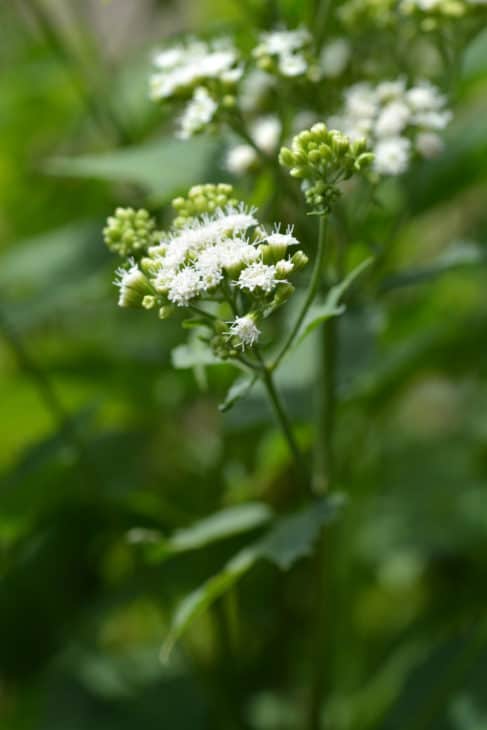
Native to North America, White Snakeroot grows in thickets, rocky woods, rich wood margins, and rocky areas. It grows flattened, loose clusters of small, fluffy, white blossoms. This weedy perennial features lance-shaped, long-stalked, sharp-toothed, oval-elliptic, dark green leaves. The leaves and stems of this plant contain tremetol, which is toxic to humans and animals. It can cause muscular degeneration, tremors, loss of coordination, and irregular heart rate.
23. Yellow Jessamine (Gelsemium Sempervirens)
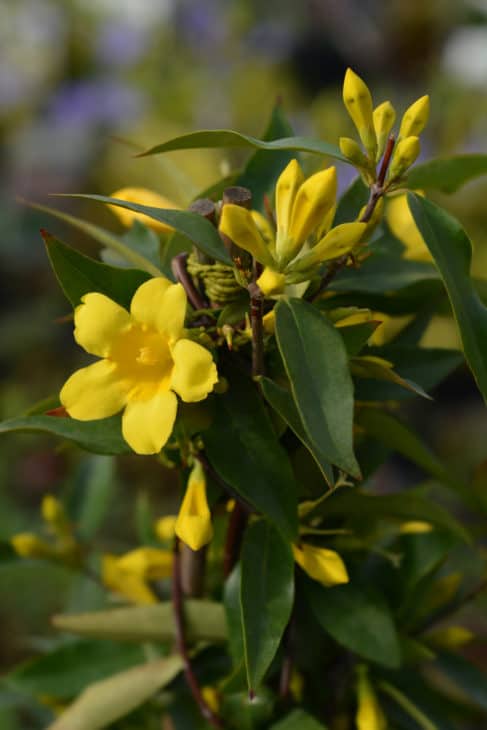
The tangled vine Gelsemium sempervirens is native to the subtropical and tropical regions of South and Central America and the southeastern and south-central regions of the United States. The entire plant is highly toxic. Even a tiny amount can be deadly. Visual issues, trouble swallowing, headaches, and dizziness are only some of the poisoning symptoms. Other symptoms include breathing difficulties and seizures.
24. Scotch Broom (Cytisus Scoparius)
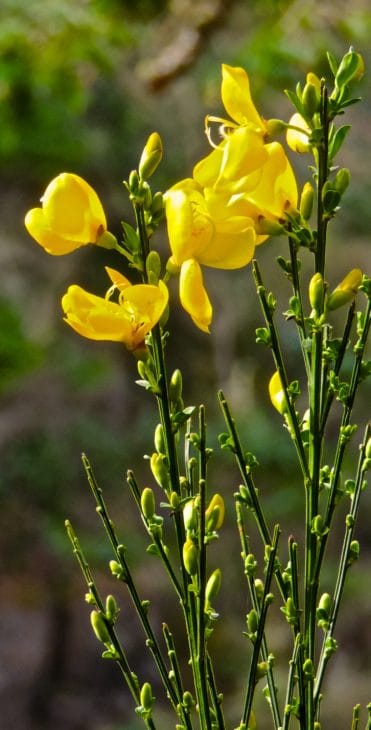
Open spaces, particularly those with recent soil disturbance, are inundated with Scotch broom. Since scotch broom will take over native and valuable plants, grassland and woodland habitats will be lost. The seeds and other plant pieces poison humans, horses, and other livestock. Toxins called quinolizidine alkaloids can be found in this plant. Throughout the entire plant, this is to be found. The effects of ingestion include vomiting, nausea, diarrhea, lack of coordination, fatigue, and an elevated heart rate.
25. Showy Crotalaria (Crotalaria Spectabilis)
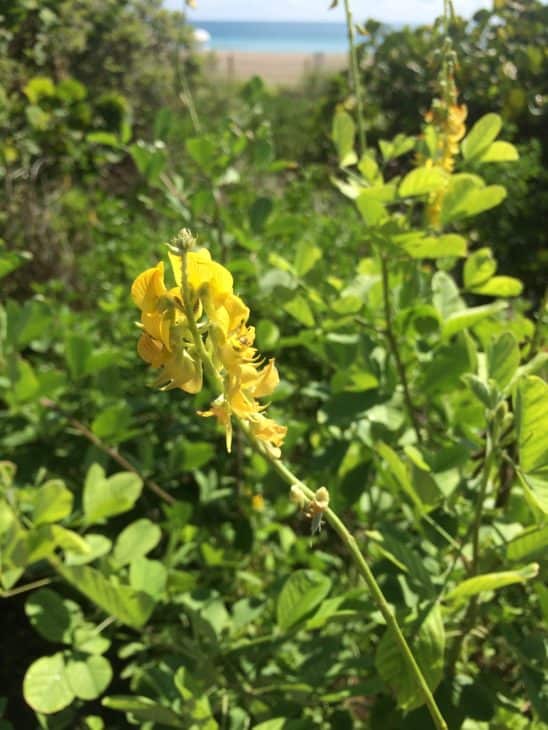
Pea-family Fabaceae flowering plant Crotalaria spectabilis (the spectacular rattlebox or showy rattlepod) is known for its brightly colored flowers and distinctive rattle. Indian Subcontinent, Southeast Asia, and China are the three regions where it is native. It has now spread across the tropics and subtropics of the world, becoming a significant pest in agriculture. All plant parts are hazardous, with the seeds holding the most amount of poison. Plants should be evicted from the property to prevent the loss of animals. Even if the plant is chopped down and left to die, the toxins will remain.

